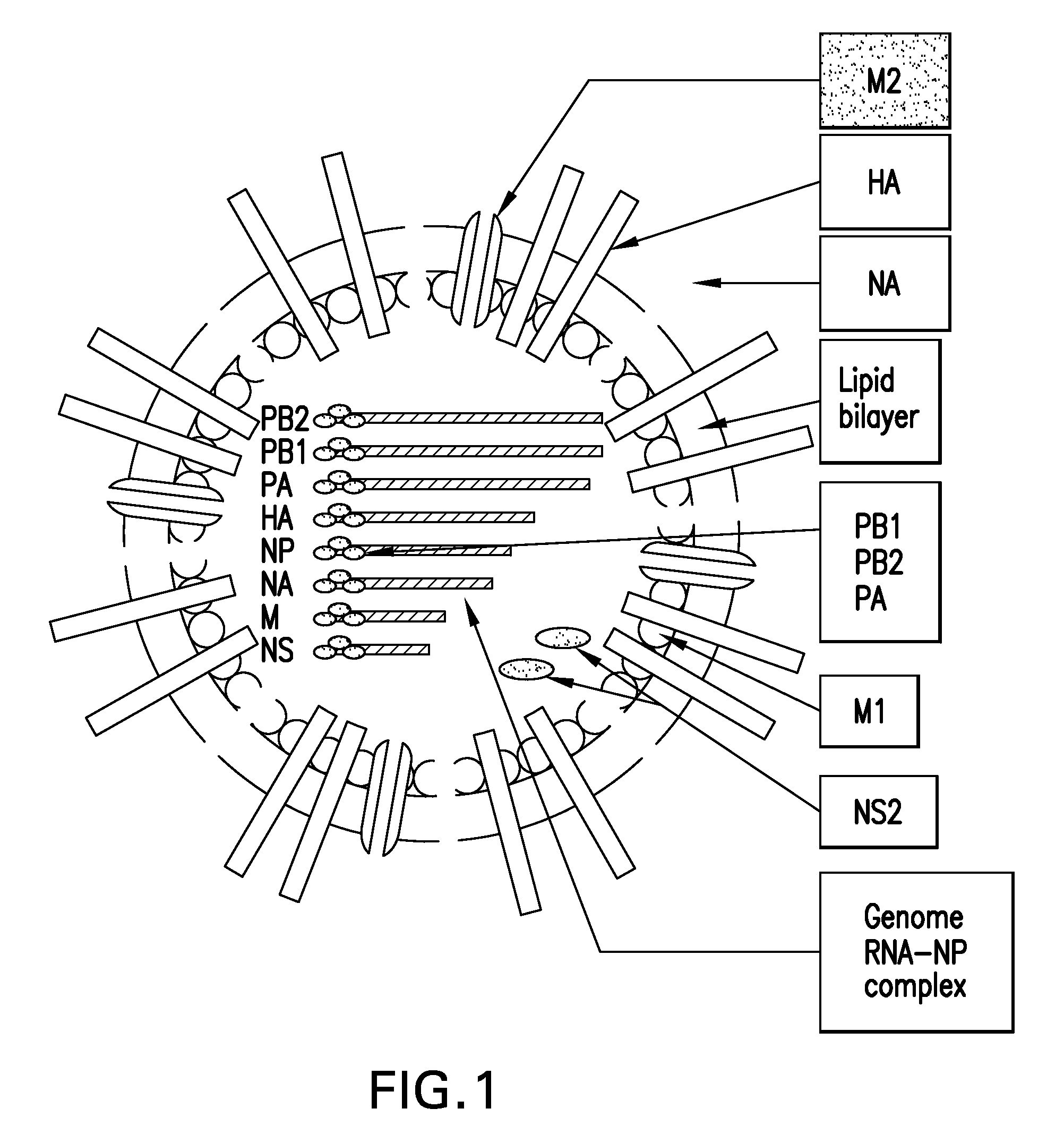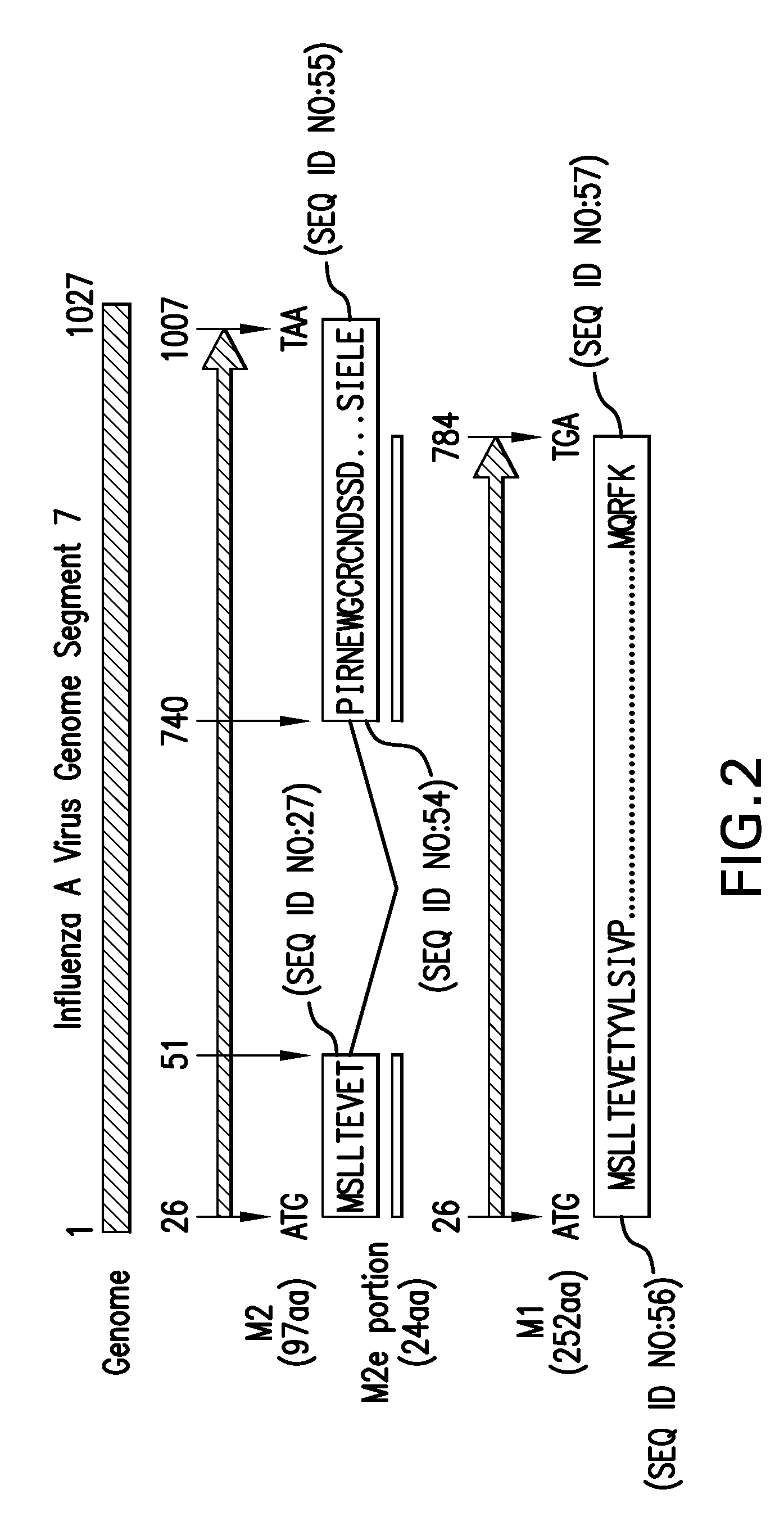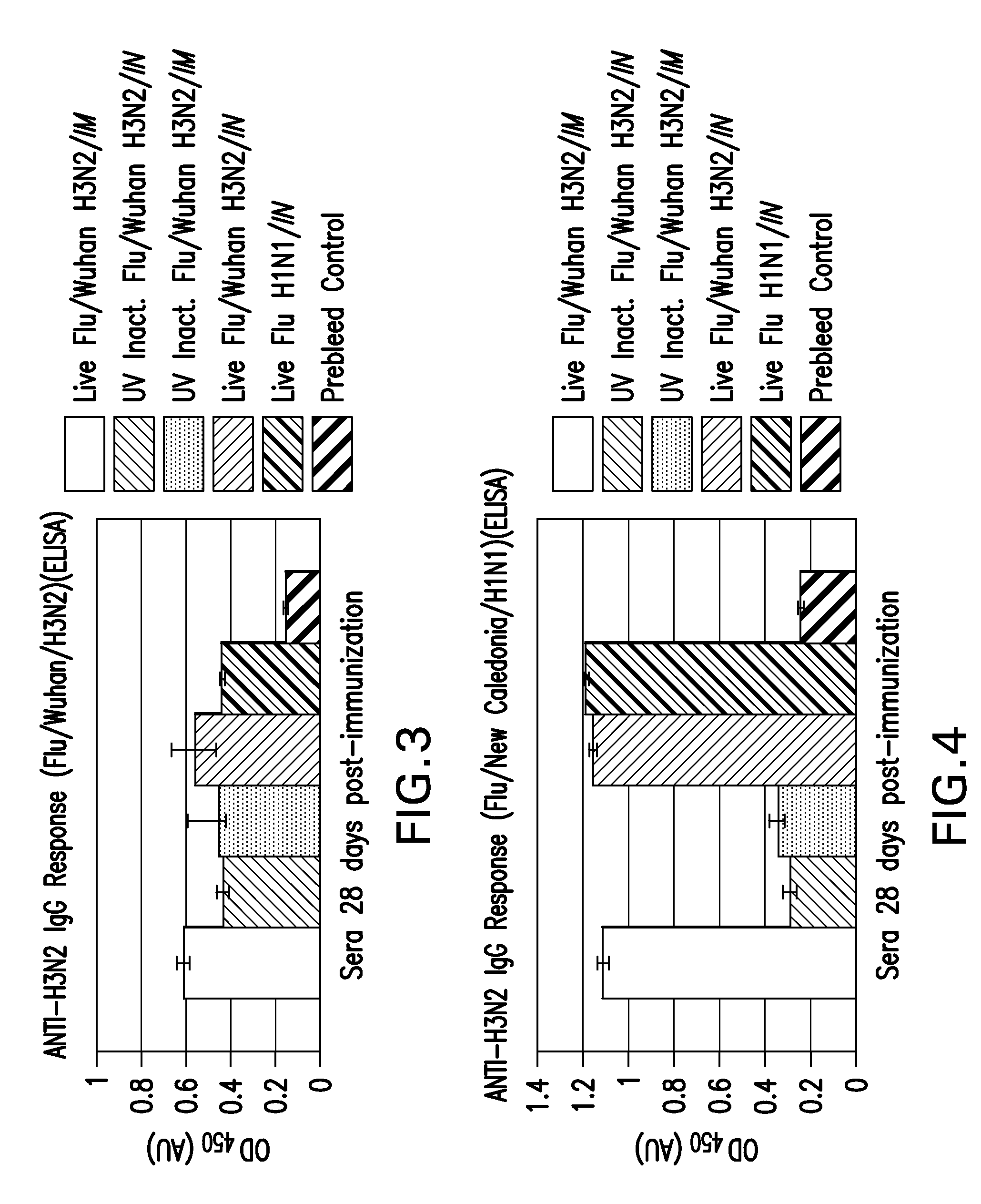Immunogenic compositions and methods
a technology of compositions and immunomodulatory compounds, applied in the field of medicine and pharmaceuticals, can solve the problems of insufficient universal protection and 100% effective prevention of disease, inability to make effective vaccines by conventional means, and inability to meet the needs of patients, so as to enhance immunity against influenzavirus, enhance cross-protection, and enhance the immune response to a vaccine antigen.
- Summary
- Abstract
- Description
- Claims
- Application Information
AI Technical Summary
Benefits of technology
Problems solved by technology
Method used
Image
Examples
example 1
Priming Study
[0341]This vaccine model was intended to identify methods to, and to assess the capacity of different antigens to induce immunity and to prime influenza immunity prior to heterologous or homologous boosting. Cotton rats were administered whole live or inactivated (H3N2 or H1N1) virus intranasally as a respiratory infection. Live H3N2 virus was given intramuscularly (IM), and inactivated H3N2 was administered both IM and intranasally (IN). Live H1N1 virus was administered solely IN to enable a comparison of antibody responses. Complete Freund's adjuvant (CFA) was co-administered in selected cases. The “H3N2 plate” measured enzyme-linked immunosorbent assay (ELISA) for IgG against live H3N2 virus as shown in FIG. 3. The “H1N1 plate” measured ELISA for IgG against live H1N1 virus as shown in FIG. 4.
[0342]Intramuscular immunization with live virus may be as good as live intranasal or other novel priming approaches described herein, and may also be useful for immunization as...
example 2
Vaccination using PF2001 and M2e Peptides Against Influenza H3N2 in Cotton Rats Using Conserved Peptide Immunogens
[0344]A 39-amino acid (aa) synthetic peptide (designated herein “PF2001”, and also referred to alternatively herein as “Peptide 5906” or “SEQ ID NO:44”) was produced and administered to test subjects as described. This vaccine was constructed utilizing two overlapping peptide sequences from M2e and T-cell epitope sequence from C. tetani toxin. The final product was a synthetic fusion polypeptide containing two distinct M2 epitopes, i.e., peptide sequences, recognized by IgG MAbs, and one T-cell epitope sequence. PF2001 was synthesized using standard SPPS, which was scalable for increased production capability. The primary amino acid sequence of this immunogenic 39-aa peptide is SLLTEVETPIRNEWGLLTEVETPIRYIKANSKFIGITE (SEQ ID NO:44). Test compounds for this study also included the complete M2e peptide sequence; both were administered at a target concentration of 0.2 mg / ml....
example 3
[0357]A polymicrobial target antigen was prepared by SPPS having the following amino acid sequence (hyphens separating selected peptide sequences are inserted for the reader's convenience and do not represent constituents of the peptide): GNLFIAP-GNLFIAP-QYIKANSKFIGITE-GNLFIAP (also referred to herein as “Peptide 5907”; SEQ ID NO:15). This 35-aa target antigen includes a repeated HA modified epitope (GNLFIAP, also referred to herein as “Peptide 5910”; SEQ ID NO:5) combined with a tetanus T-cell stimulating epitope (QYIKANSKFIGITE, SEQ ID NO:53). A vaccine prepared from the synthetic polypeptide raises an immune response against both Influenza H1N1, H3N2, and H5N1 following administration to test subjects as a primary vaccine or as a booster following priming with live virus (infection), whole virus vaccine, or synthetic peptide vaccine.
PUM
 Login to View More
Login to View More Abstract
Description
Claims
Application Information
 Login to View More
Login to View More - R&D
- Intellectual Property
- Life Sciences
- Materials
- Tech Scout
- Unparalleled Data Quality
- Higher Quality Content
- 60% Fewer Hallucinations
Browse by: Latest US Patents, China's latest patents, Technical Efficacy Thesaurus, Application Domain, Technology Topic, Popular Technical Reports.
© 2025 PatSnap. All rights reserved.Legal|Privacy policy|Modern Slavery Act Transparency Statement|Sitemap|About US| Contact US: help@patsnap.com



